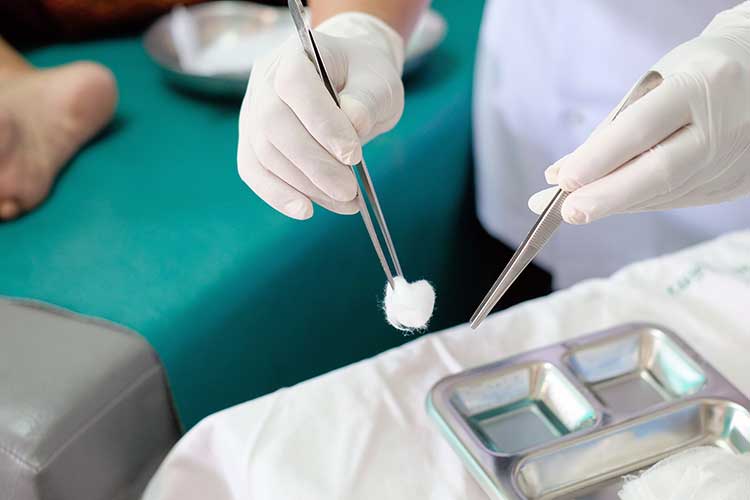
Similarly, all antiseptic bowls and applicators should be sterilized between patients. Clipper blades should be pre-sterilized as they can generate epidermal microabrasions that can be colonized with the bacteria of a prior patient. Pre-surgical anesthesia, shaving, and antiseptic cleansing should be performed in a designated area that is not the surgical suite.
#Aseptic technique in surgery skin
Preoperative examination for corneal ulceration, skin infection, ear infection, and respiratory disease, will determine if surgical postponement is warranted. A client’s bathing of their pet can significantly reduce bacteria-laden debris if performed within a day of surgery. Ocular surgical asepsis of the veterinary patient begins at home. These emergency procedures are therefore typically associated with higher rates of postoperative infection. Infected enucleated eyes should be cultured to guide appropriate courses of postoperative antibiotics. eyelid laceration, corneal rupture, or lens luxation). Pre-existing disorders and infections cannot typically be controlled in cases requiring emergency ocular surgery (i.e. Routine ocular surgery should be avoided in cases with active or acute infections.

Direct contact between the cornea and skin (especially in cases where ocular and/or systemic conditions increase the number of epidermal bacteria) predispose patients to postoperative infection. Predisposing conditions include, but are not limited to, blepharitis, conjunctivitis, canaliculitis, lachrymal duct obstruction, dry eye syndrome, prosthesis in the fellow orbit, entropion, immunosuppression, Cushing-like syndrome, and diabetes. Ideally, these disorders should be corrected or controlled prior to non-emergency surgery to prevent postoperative infection. Appropriate blood testing (including a CBC, chemistry panel, urinalysis, and urine culture) and physical examination will reveal established infections and determine the risk of subsequent infection in the patient. A surgical or sterile asepsis therefore refers to the elimination of pathogenic organisms from a surgical area.īacteria colonizing the epidermis are the primary source of infection of a surgical wound. Ocular infections are generally derived from the epidermal Staphylococci of a patient.
#Aseptic technique in surgery free
Unfortunately, antiseptics are generally more expensive than, and not as effective as, most disinfectants. Asepsis implies a site free of pathogenic organisms, whereas aseptic technique refers to procedures designed to reduce the number of pathogenic organisms and prevent their reproduction. Antiseptics are chemical agents applied to living tissues that prevent sepsis (or putrefaction) by killing or inhibiting the growth of microbes. Many disinfectants cannot be used as antiseptics as they damage living tissue. Disinfectants are chemical agents applied to inanimate objects that kill microbes capable of producing infections.

Sterilization is defined as the total inactivation of all microbial reproduction on, or within, a material. Although ideal, sterilization is not routinely attained at any surgical site. The terminology of bacterial control is often misunderstood and can lead to inappropriate behavior by a veterinary surgeon. Proper aseptic technique prevents subsequent infection and does not require the total elimination of bacteria within a surgical wound. Antibiotics may encourage the postoperative growth of resistant bacteria following non-aseptic procedures. Peri- and postoperative courses of antibiotics are not alternatives to aseptic techniques. Prevention of a postoperative ocular infection begins and ends with an aseptic surgical site. Postsurgical infection of periocular tissues (eyelids, conjunctiva, and/or third eyelid) can result in significant visual impairment (Figure 1).Subsequent corrective surgery may significantly increase the morbidity, and even the mortality, of veterinary patients. Postoperative endophthalmitis and corneal infection are rare but serious complications of intraocular surgery. The Art of Aseptic Technique in Ophthalmic Surgery


 0 kommentar(er)
0 kommentar(er)
